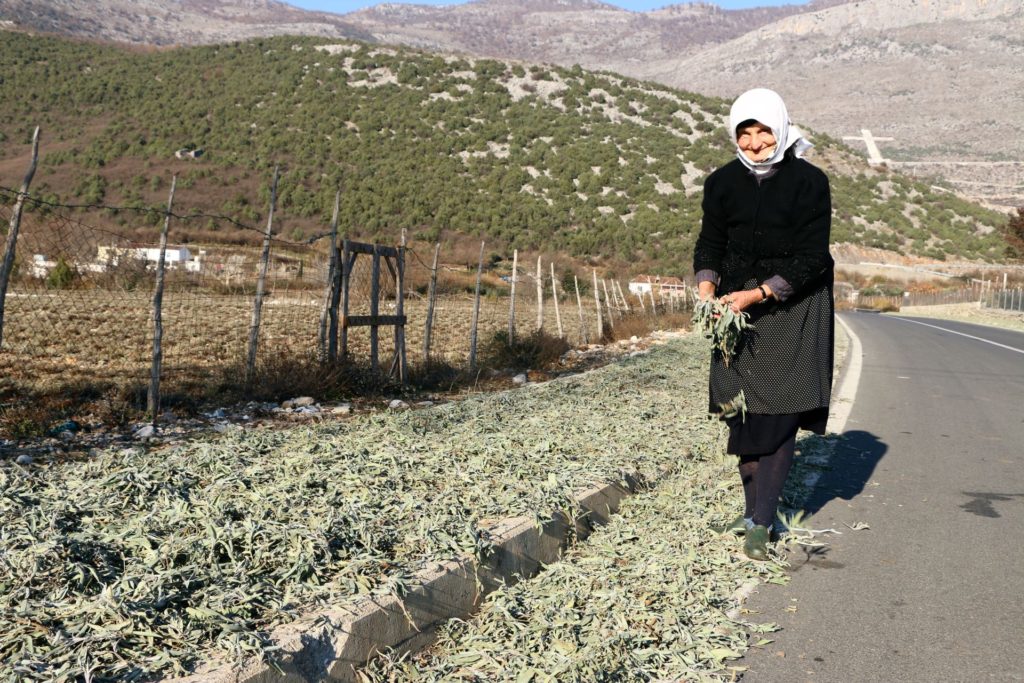
A few days ago I read in the media that the new road from the Montenegrin/Albanian border (Božaj/Hani i Hotit) to Vermosh (Grnčar) through the Kelmend region was opened. No breaking news for Montenegrin media – the information was originally provided by Ul Info. They pointed at the fact that the 70 km long road (cost: 45 million US Dollars) reduced the journey from Ulcinj to Gusinje or Plav by 100 km or two hours.
But also the inhabitants (and ex-pats) from Podgorica will have much easier access to the north-eastern part of Montenegro, i.e. Prokletija National Park. So far, the shortest route from Podgorica to Gusinje- through Kolašin, Mateševo and Andrijevica – was 151 km long or almost 3.5 hours driving (according to Via Michelin data). Travelling the new SH20 road you can reach Gusinje in 2 hours (96 km). Of course, there might be a bottleneck at the border, where many big trucks have to pass a narrow road, but construction works at the Albanian side of the Božaj/Hani Hotit border show that this problem will certainly be resolved before next spring.
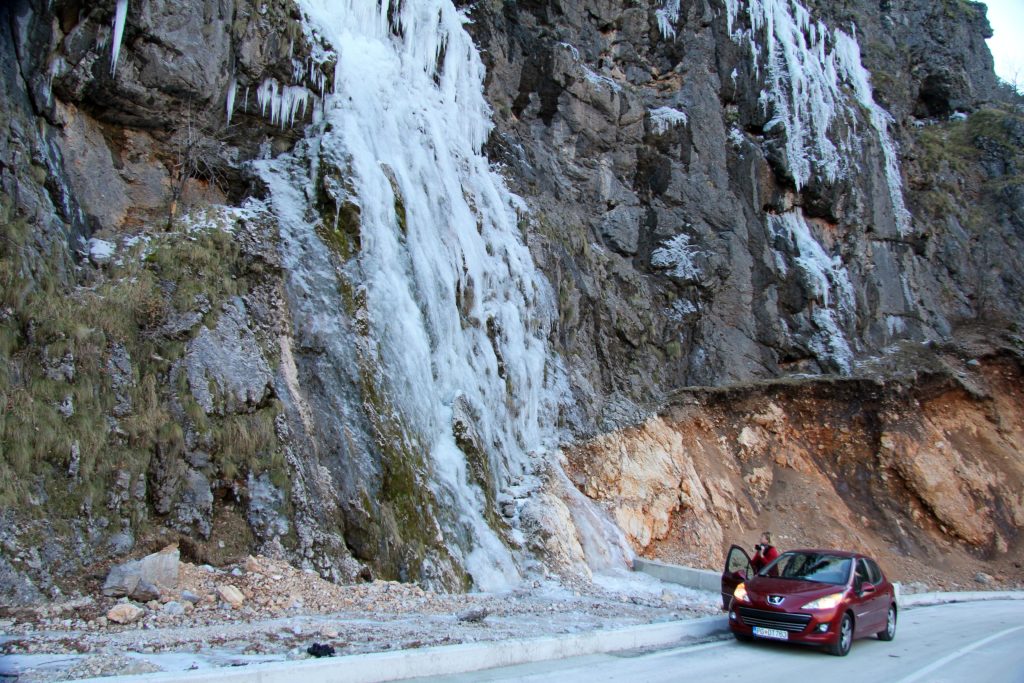
Why was this news such a pleasant surprise for me? Well, I have visited this area several times and I think that it is one of the most beautiful regions in Albania (see: Discover Kelmend valley in Albania). Until Tamarë, the road had already been finished a few years ago (see: Albania, Tamare: the new Kelmend road), but at that time, it was impossible to continue further to the north with a passenger car.
So when we went hiking in the mountains around Lepushë last May (see: Lepushe: hiking in Kelmend), we had to hire a 4×4. People told us that the road would be finished until the end of the year, but we just could not believe it! It took us hours to arrive in Vermosh, over a muddy dirt road, full of holes and big stones ….
But it really happened and this was a good reason to convince ourselves this weekend. After passing the border without any delay, we turned left at the first round-about and passed the villages of Hot and Rapsh. The huge white stone cross on the slope of the mountain showed that this area is predominantly inhabited by catholic Malissores. We saw beautiful churches and long side-walks made of hewn stones – but also lots of garbage and plastic bags hanging in the fences along the road. What a contrast!
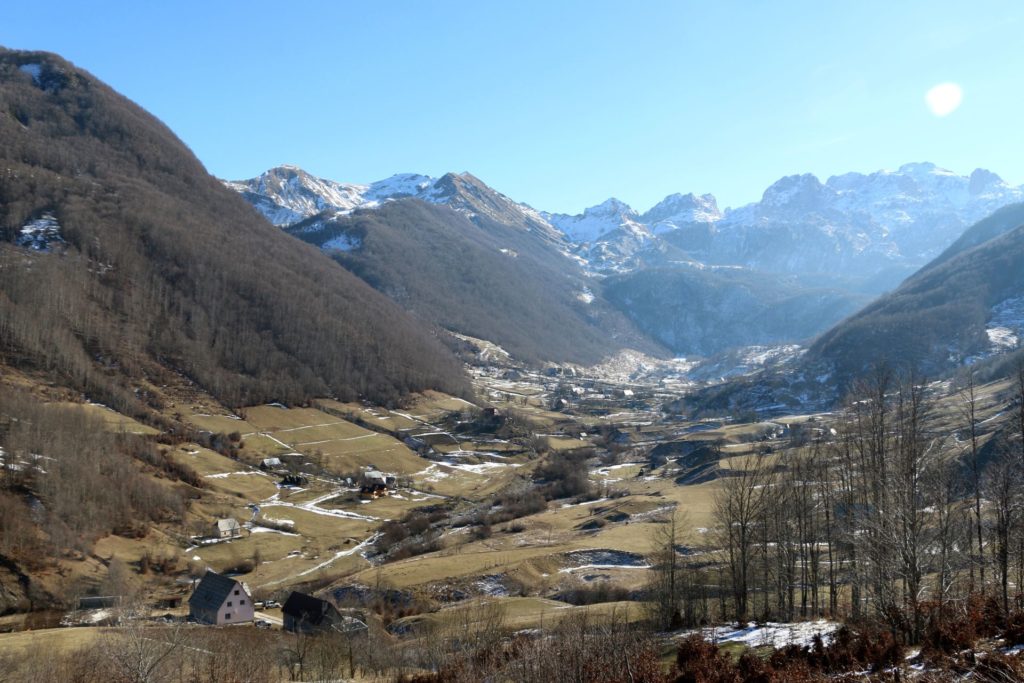
And there was something else that struck us… most of the sidewalks were covered with herbs – could it be sage? – drying in the sun. I doubt whether this was the purpose of building the side-walks, but why not using them in this way? A friendly Malissore woman showed us how to shake the herbs in order to get them dry as soon as possible. By the way, growing medicinal herbs is one of the most important sources of income in this area.
Driving uphill, we left the Skadar Lake plain behind us and at the top we arrived at a magnificent panorama point, where we had a great view of the Cijevna/Cem canyon and the surrounding mountains. Then we slowly continued downhill along dangerous serpentines (now provided with strong protection rails) to the river valley and finally we arrived in the village of Tamarë.
Tamarë has around 500 inhabitants only, but a beautiful new central square de of hewn stone welcomes visitors with a fountain, shops, restaurants and pubs around and even an info-point.
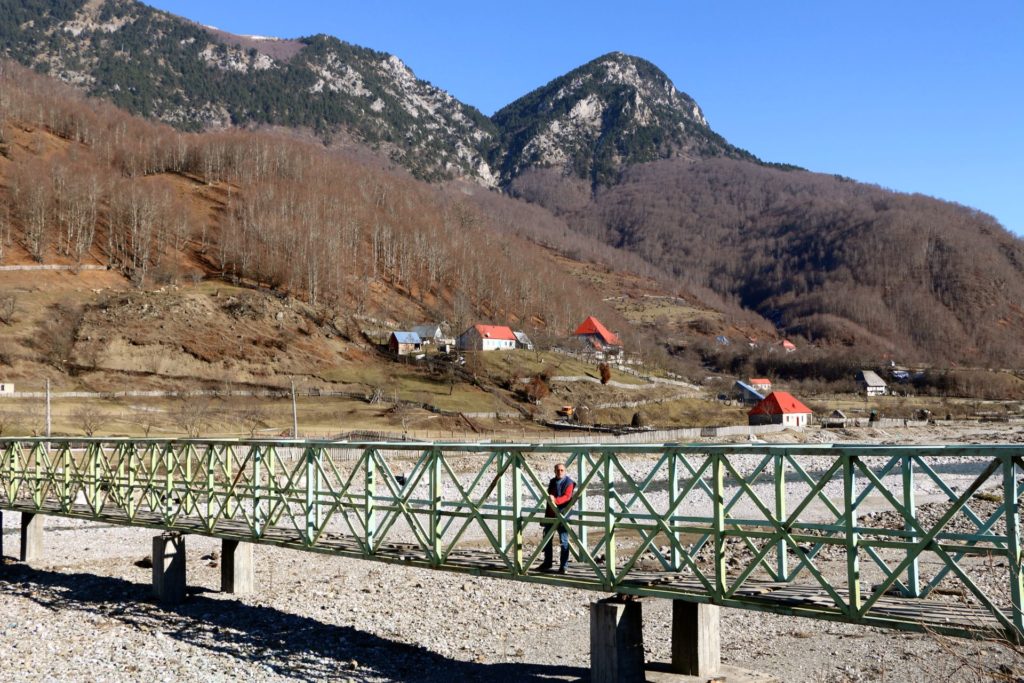
We continued through the rough rocky landscape to Lepushë, a village situated on a picturesque plateau at an altitude of around 1200 m above sea level. Several info-boards provided information about guesthouses and campsites. No wonder, it is a magnificent place, surrounded by high mountains.
Here and there we could see snow patches along the road and at some places, where water was coming out of the rocks, the huge ‘ice curtains’ looked like a fairy-tale.
We passed the village of Selce and soon we arrived at a junction, where the road turns left to Vermosh and right to the border crossing. We visited Vermosh (just a few kilometers further), driving along the huge bed of the Vermosh river. The water level was still rather low and we could cross the iron pedestrian bridge to the other side of the village, where picturesque old farms were nestled on the slopes of the mountains (see Vermoshi, Albania: The land of the living past).
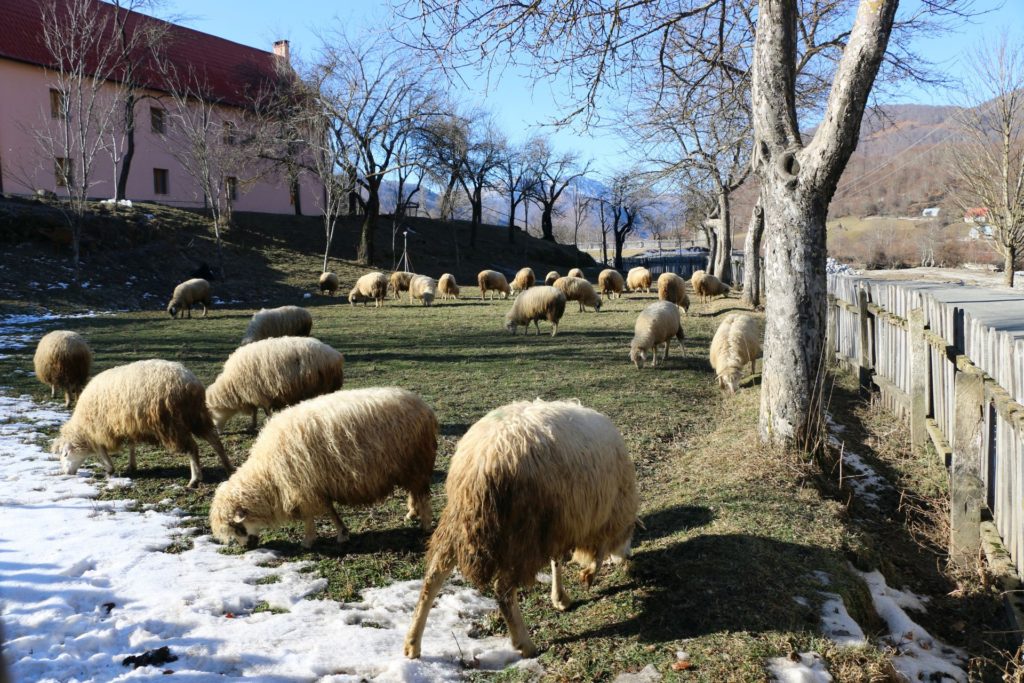
In the courtyards we saw some pigs and sheep, but the central part of the village with its catholic church and several dilapidated buildings was abandoned. Will it be reconstructed, like in Tamarë? I suppose that this would be the only way to prevent people from destroying the beauty of this authentic village by illegal building.
Returning by the same road, we enjoyed once more the untouched nature and the immense rocky mountains. I really hope that Kelmend will succeed in keeping all of its beauty and authenticity, regardless of the new road that will, no doubt, bring economic progress.
But there is another question: on our way back we turned left just after Tamarë – following the signpost ‘Dogana Grabom’ on a new asphalt road. ‘Dogana’? Border? Would that be the border crossing on the road along the Cijevna river that is only 25 km away from Podgorica? Wow, that would be great! But alas, we followed the brand new road, provided with all required traffic signs, until we had to stop in front of large concrete barricades … Although the Albanian part of this road is completely finished, it is not possible to pass this border … Does somebody know why?
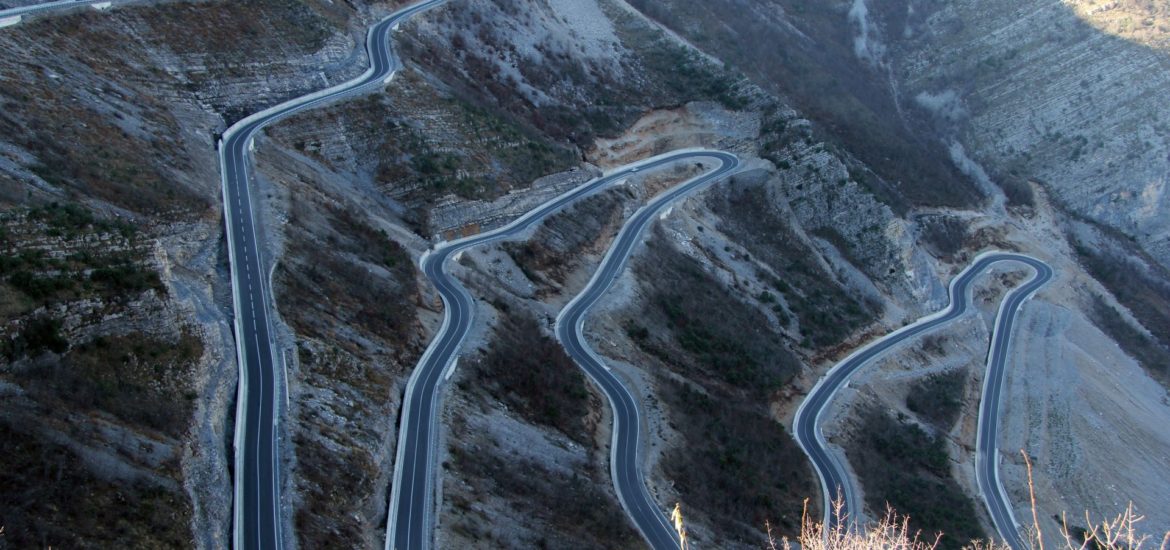

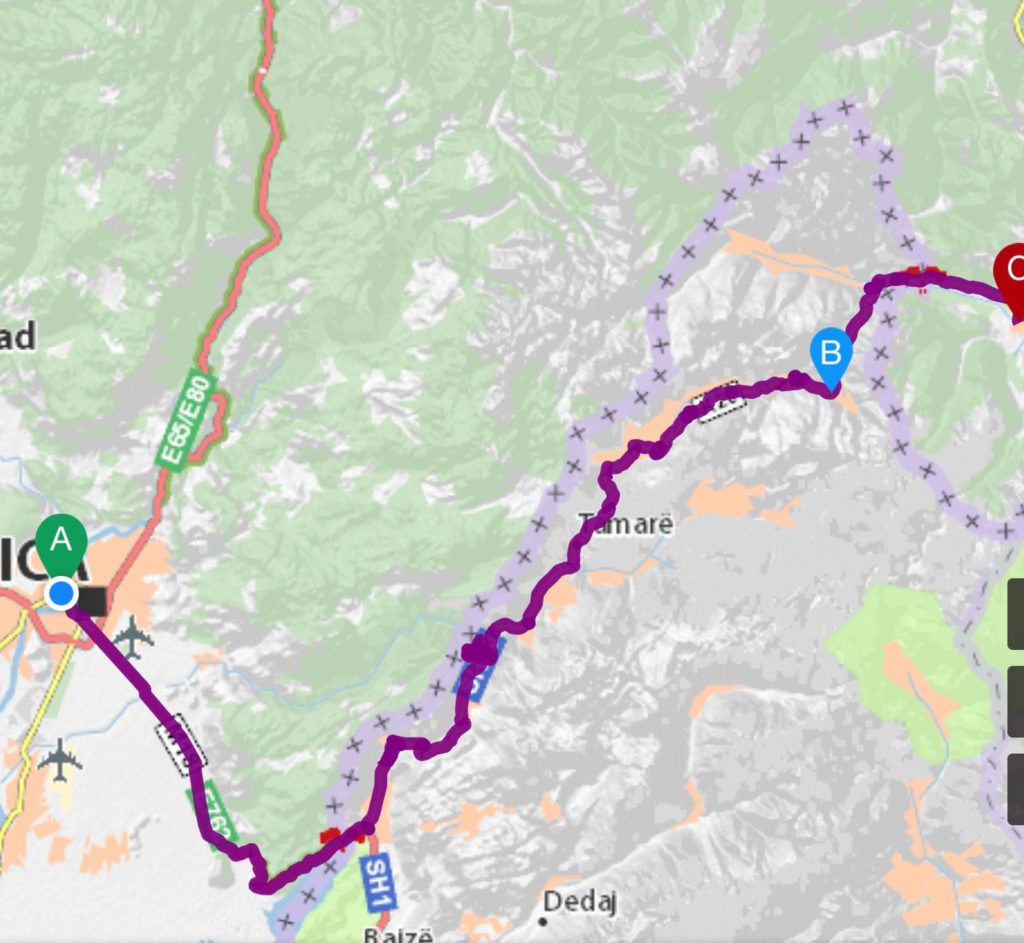
Because there is no finished road connection through Montenegro part of Cijevna canyon..
There is a picturesque asphalt road from Podgorica along the Cijevna river to the border. I agree, it is rather narrow. At the end of the road is an elementary school and abandoned military barracks. I even passed the old abandoned border and on the other side I saw several (Montenegrin) information boards for fly-fishing. I don’t think that it is a big problem to open the border point!
[…] P.S. The new Kelmend road SH20 was opened in December 2016 (see: The new Kelmend road (SH20) in Albania.) […]
You say ” Kelmend road SH20 was opened in December 2016″ – does it mean it is open all the way from Tamara to Vermosh?
Yes, it is open all the way from Tamara to Vermosh and also to Montenegro (Gusinje, Plav).
[…] Plav in Prokletije National Park and pass the Albanian border near Gusinje. The newly constructed Kelmend road is one of the highlights of North […]
[…] capital Podgorica or approaching from the north by the fantastic, newly-constructed Kelmend road. I would recommend the last […]
[…] new road through the picturesque Kelmend valley was opened in October 2016. It is around 70 km long and passes through the most beautiful mountain […]
Do you know if there is a place to buy temporary insurance for the car to Albania at Vermosh border?
Thanks
No, this is a very small border crossing, you need a green card.
I am from Ireland ,rented a car in Dubrovinik with Insurance for Albania Mont and Bosnia ,drove this highway built by EU support ,met lovely people ,maybe skiing coming soon